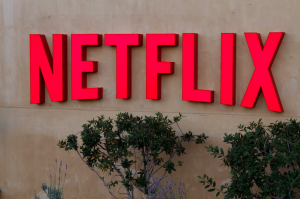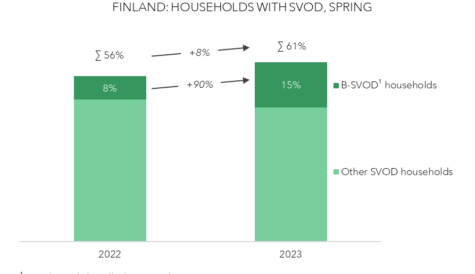
After more than 40 years of operation, DTVE is closing its doors and our website will no longer be updated daily. Thank you for all of your support.
Netflix misses US sign-up targets in disappointing Q3
 Netflix missed its US target for new customer sign-ups and reported lower than expected operating income in its third quarter results.
Netflix missed its US target for new customer sign-ups and reported lower than expected operating income in its third quarter results.
The subscription video-on-demand service added 0.88 million new US members in the quarter, compared to 0.98 million prior year and a forecast of 1.15 million.
Netflix attributed the over-forecast to “slightly higher-than-expected involuntary churn” which it said was down to the ongoing transition to chip-based credit and debit cards in the US, which has resulted in cards being re-issued – sometimes with different card or account numbers.
Globally, Netflix’s membership grew by 3.62 million to 69.17 million members, beating its forecast of 3.55 million. Netflix said that in terms of global net additions, Q3 saw its most accurate projections to date.
In terms of financials, Netflix’s operating income was US$74 million (€65 million), compared to US$110 million last year and a forecast of US$81 million. Net income almost halved year-on-year from US$59.2 million to US$29.4 million. Meanwhile, revenue climbed year-on-year from US$1.41 billion to US$1.75 billion but was just shy of Reuters estimates of US$1.75 billion.
“As we have indicated previously, international contribution losses will grow sequentially in Q4 as we launch Spain, Italy and Portugal. We have announced our expansion to South Korea, Hong Kong, Taiwan and Singapore in early 2016. Our plan remains to run around break-even through 2016 and to deliver material profits thereafter,” said Netflix CEO Reed Hastings and CFO David Wells in a letter to shareholders.
Netflix said it remained “on track to become global by the end of 2016” but said that the competitive landscape “remained vibrant” as other SVoD services continue to evolve and remain active bidders for content.
Speaking on the Netflix earnings call, chief content officer Ted Sarandos said: “The media business is absolutely in flux… You’ve had this growing move away from linear and towards on-demand, both watching and spending. So the future of how the networks and studios deal with Netflix, and Hulu, and Amazon Prime Instant Video is certainly going to determine their future.”
On the content side, Sarrandos said “I think we definitely are being more adventurous in terms of the genres that we’re going into,” citing the launch of Netflix’s first talk show, with Chelsea Handler, early next year. He added that the likelihood of Netflix competing directly with Vice in the next two years is “probably high.”
Commenting on the results, Paolo Pescatore, director of multiplay and media at CCS Insight said: “The key takeaway from Netflix’s latest financial results is its slower US subscriber growth. This is a result of the US competitive landscape intensifying and the arrival of new online video services such as Sling TV.
Pescatore claimed that for Netflix these latest results “reinforce that its future growth lies in overseas expansion”, but said the main obstacles will be the amount of investment needed to secure rights for each country and how quickly the firm can become profitable in each market.
“Regardless, we still believe that Netflix is a prime takeover target. All web players are looking for a stronger presence in paid-for video, something Netflix has achieved with remarkable success – potential suitors include Apple, Alibaba and Google,” he added.
eMarketer media analyst, Paul Verna, said: “Netflix faces an increasingly fragmented and competitive market. Companies including Amazon, Hulu, Apple, Google and HBO are not only vying for viewing time and subscription dollars, they are also driving up the cost of content acquisition.
“Netflix plans to invest approximately US$5 billion in content next year, up from just over US$3 billion in 2015. These rising costs, coupled with ongoing international expansion, will continue to put pressure on Netflix’s profitability.


